Search
Categories
- All
- Anesthesiology
- Breast Surgery
- Cancer Center
- Dermatology
- Ears, Nose, and Throat
- Emergency Room
- Endocrinology
- Family Medicine
- Fertility Clinic
- Gastroenterology
- General Surgery
- Gynecology
- Internal Medicine
- Laboratory
- Medical Imaging
- Nuclear Medicine
- Nutrition
- Obstetrics
- Ophthalmology
- Stomatology
- Orthopedics and Sports Medicine/Rehabilitation
- Pediatrics
- Pharmacy
- Psychology
- Respiratory Medicine
- Surgery
- Vasculocardiology
- PCR test (incl. bilingual report service fee)
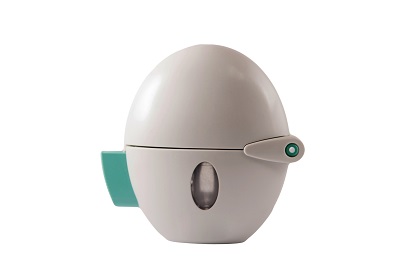
How to use SPIRIVA HANDIHALER
LEARN MOREStep 1: Opening your HANDIHALER device
• Open the dust cap (lid) by pressing the green piercing button.
• Pull the dust cap (lid) upwards away from the base to expose the mouthpiece.
• Open the mouthpiece by pulling the mouthpiece ridge up and away from the base so the center chamber is showing.Step 2: Inserting the SPIRIVA capsule into your HANDIHALER device
• Each day, separate only 1 of the blisters from the blister card by tearing along the perforated line.
• Remove the SPIRIVA capsule from the blister.
• Place the SPIRIVA capsule in the center chamber of your HANDIHALER device.
• Close the mouthpiece firmly against the gray base until you hear a click. Leave the dust cap (lid) open.Step 3: Piercing the SPIRIVA capsule
• Hold your HANDIHALER device with the mouthpiece pointed up.
• Press the green piercing button once until it is flat (flush) against the base, then release. This is how you make holes in the SPIRIVA capsule so that you get your medicine when you breathe in.
• Do not press the green button more than one time.
• Do not shake your HANDIHALER device.
• The piercing of the SPIRIVA capsule may produce small gelatin pieces. Some of these small pieces may pass through the screen of your HANDIHALER device into your mouth or throat when you breathe in your medicine. This is normal. The small pieces of gelatin should not harm you.Step 4: Taking your full daily dose
• Breathe out completely in 1 breath, emptying your lungs of any air.
• Hold your head in an upright position while you are looking straight ahead.
• Raise your HANDIHALER device to your mouth in a horizontal position. Do not block the air intake vents.
• Close your lips tightly around the mouthpiece.
• Breathe in deeply until your lungs are full. You should hear or feel the SPIRIVA capsule vibrate (rattle).
• Hold your breath for a few seconds and, at the same time, take your HANDIHALER device out of your mouth.
• Breathe normally again.
• To get your full daily dose, you must again, breathe out completely and for a second time, breathe in from the same SPIRIVA capsule. (Do not press the green piercing button again.)Reference:
SPIRIVA HANDIHALER Package Insert
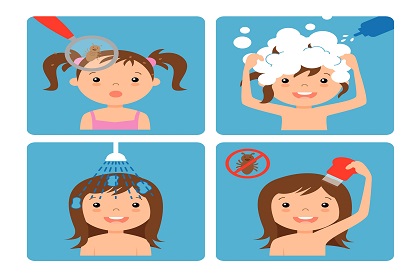
Lice Shampoo Patient Education
LEARN MOREWhat is this Lice Shampoo used for?
1. It is used to treat head lice.How to use Lice Shampoo?
1. Apply adequate lice shampoo on hair then massage until making a rich foam.
2. Wait 5-10 minutes, then rinse.
3. Dry with a clean towel.Warning and caution!
1. Avoid applying this drug to the eyes or mouth. If this product gets in these areas, rinse with plenty of water.
2. Avoid the use of hair conditioner or shampoo-conditioner combination products before application of the lice shampoo.
3. Use of a nit comb to remove lice and nits after treatment may help to decrease the risk for re-infestation. Nit combing can be performed every two to three days for two to three weeks.
4. Clean clothing should be put on after lice shampoo treatment. Hair should not be rewashed for at least one to two days after the use of the lice shampoo.
5. A few live lice may be seen 8 to 12 hours after using the lice shampoo, and there is no need to immediately reapply the shampoo if they are moving slower than they were prior to treatment.
6. However, if lice are as active as before treatment, the treatment may not be effective.
7. Thus, a second treatment is needed with the lice shampoo 7-9 days after the first treatment.How to prevent head lice spreading?
1. Wash clothes, bedding, and towels in hot water and dry them on the hottest setting.
2. Vacuum your carpets and furniture.
3. Put things you cannot wash into a sealed plastic bag for 2 weeks.
4. Adults and children who live with a person diagnosed with lice should be examined for lice and treated if needed.
5. Anyone who sleeps in the same bed should be treated for lice, even if no lice or eggs are found.
6. Not sharing a bed, clothes, or personal items with someone who has lice.Storage conditions
1. Store at room temperature.
2. Protect from light and moisture.
3. Do not store in the bathroom. Keep it away from children and pets.Reference:
1. Lice Shampoo instructions
2. https://www.webmd.com
3. Up to date
Dabigatran (Pradaxa) Capsules Patient Information
LEARN MOREWhat is this drug used for?
• It is used to thin the blood so that clots will not form.
• It is used to treat blood clots.Warning
• Do not stop taking this drug without talking to the doctor who ordered it for you. Stopping this drug when you are not supposed to may raise the chance of blood clots. This includes stroke in certain people. You may need to stop this drug before certain types of dental or health care. Your doctor will tell you when to start taking it again. Follow what your doctor tells you closely.
• People who have any type of spinal or epidural procedure are more likely to have bleeding problems around the spine when already on this drug. This bleeding rarely happens, but can lead to not being able to move body (paralysis) long-term or paralysis that will not go away. The risk is raised in people who have problems with their spine, a certain type of epidural catheter or have had spinal surgery. The risk is also raised in people who take any other drugs that may affect how the blood clots like blood-thinner drugs (like warfarin), aspirin, or nonsteroidal anti-inflammatory drugs (NSAIDs). Talk to the doctor.
• Tell your doctor you use this drug before you have a spinal or epidural procedure. Call your doctor right away if you have any signs of nerve problems like back pain, numbness or tingling, muscle weakness, paralysis, or loss of bladder or bowel control.• Talk with your doctor if you have recently had or will be having a spinal or epidural procedure. Some time may need to pass between the use of this drug and your procedure. Talk to your doctor.
What do I need to tell my doctor BEFORE I take this drug?
• If you have an allergy to dabigatran etexilate or any other part of this drug.
• If you are allergic to this drug; any part of this drug; or any other drugs, foods, or substances. Tell your doctor about the allergy and what signs you had.
• If you have bleeding problems.
• If you have had a heart valve replaced.
• If you have kidney problems.
• If you are taking any of these drugs: Dronedarone or ketoconazole.
• If you are taking rifampin.
• If you are taking or will be taking another drug like this one.
• If you are breast-feeding. Do not breast-feed while you take this drug.
• This is not a list of all drugs or health problems that interact with this drug.
• Tell your doctor and pharmacist about all of your drugs (prescription or OTC, natural products, vitamins) and health problems. You must check to make sure that it is safe for you to take this drug with all of your drugs and health problems. Do not start, stop, or change the dose of any drug without checking with your doctor.What are some things I need to know or do while I take this drug?
• Tell all of your health care providers that you take this drug. This includes your doctors, nurses, pharmacists, and dentists. This drug may need to be stopped before certain types of surgery as your doctor has told you. If this drug is stopped, your doctor will tell you when to start taking this drug again after your surgery or procedure.
• Have blood work checked as you have been told by the doctor. Talk to the doctor.
• You may bleed more easily. Be careful and avoid injury. Use a soft toothbrush and an electric razor. Rarely, some bleeding problems have been deadly.
• If you fall or hurt yourself, or if you hit your head, call your doctor right away. Talk with your doctor even if you feel fine.
• If you are 65 or older, use this drug with care. You could have more side effects.
• If you are pregnant or you get pregnant while taking this drug, call your doctor right away.What are some side effects that I need to call my doctor about right away?
WARNING/CAUTION: Even though it may be rare, some people may have very bad and sometimes deadly side effects when taking a drug. Tell your doctor or get medical help right away if you have any of the following signs or symptoms that may be related to a very bad side effect:
• Signs of an allergic reaction, like rash; hives; itching; red, swollen, blistered, or peeling skin with or without fever; wheezing; tightness in the chest or throat; trouble breathing, swallowing, or talking; unusual hoarseness; or swelling of the mouth, face, lips, tongue, or throat.
• Signs of bleeding like throwing up or coughing up blood; vomit that looks like coffee grounds; blood in the urine; black, red, or tarry stools; bleeding from the gums; abnormal vaginal bleeding; bruises without a cause or that get bigger; or bleeding you cannot stop.
• Very bad dizziness or passing out.
• Weakness on 1 side of the body, trouble speaking or thinking, change in balance, drooping on one side of the face, or blurred eyesight.
• Feeling confused.
• Feeling very tired or weak.
• Very bad headache.
• Very bad swelling.
• Very bad belly pain.
• Joint pain or swelling.What are some other side effects of this drug?
All drugs may cause side effects. However, many people have no side effects or only have minor side effects. Call your doctor or get medical help if any of these side effects or any other side effects bother you or do not go away:
• Upset stomach.
• Stomach pain or heartburn.
• These are not all of the side effects that may occur. If you have questions about side effects, call your doctor. Call your doctor for medical advice about side effects.
• You may report side effects to your national health agency.How is this drug best taken?
• Use this drug as ordered by your doctor. Read all the information given to you. Follow all instructions closely.
• Keep taking this drug as you have been told by your doctor or other health care provider, even if you feel well.
• Take with or without food.
• Swallow whole. Do not chew, open, or crush.
• Take with a full glass of water.What do I do if I miss a dose?
• Take a missed dose as soon as you think about it.
• If it is less than 6 hours until the next dose, skip the missed dose and go back to the normal time.
• Do not take 2 doses at the same time or extra doses.How do I store and/or throw out this drug?
• Store at room temperature.
• Store in a dry place. Do not store in a bathroom.
• Keep capsules in the bottle they come in and do not move to a pill holder.
• Keep lid tightly closed.
• Throw away any unused capsules left in bottle after 4 months.
• Keep all drugs in a safe place. Keep all drugs out of the reach of children and pets.
• Throw away unused or expired drugs. Do not flush down a toilet or pour down a drain unless you are told to do so. Check with your pharmacist if you have questions about the best way to throw out drugs. There may be drug take-back programs in your area.General drug facts
• If your symptoms or health problems do not get better or if they become worse, call your doctor.
• Do not share your drugs with others and do not take anyone else's drugs.
• Some drugs may have another patient information leaflet. If you have any questions about this drug, please talk with your doctor, nurse, pharmacist, or other health care provider.
• If you think there has been an overdose, call your poison control center or get medical care right away. Be ready to tell or show what was taken, how much, and when it happened.Reference:

Bismuth Potassium Citrate Capsules Patient Information
LEARN MOREWhat is this drug used for?
1、 For chronic superficial gastritis associated with helicobacter pylori (Hp) infection.
2、 It is used to relieve stomach pain and heartburn caused by excessive stomach acid.
3、 For gastric and duodenal ulcer to promote the healing of the peptic ulcer.How is this drug best taken?
1、To be taken by mouth.
2、As prescribed by your doctor. To take half an hour before meals during day time. The evening dose to be taken two hours after dinner.Warning and caution
1、The product is usually not to be used continuously for more than 7 days
2、Do not take other bismuth preparations while taking this product, and do not use it in large doses for a long time.
3、During treatment with oral bismuth, alcohol, and carbonated drinks are preferably not to be consumed, besides to minimize coffee and tea intake.Drug-drug interactions
1. Antacids: may interfere with the action of oral bismuth, take at least half an hour apart.
2. Tetracycline: combined use can affect the absorption of tetracycline.Drug-food interactions
1. A high-protein diet (such as milk) can interfere with the effect of oral bismuth, take at least half an hour apart.What are some side effects of this drug?
All drugs may cause side effects. However, many people have no side effects or only have minor side effects. Call your doctor or get medical help if any of these side effects or any other side effects bother you or do not go away:
- Constipation.
- Dark tongue and stool.
- Ammonia taste in the mouth
- Vomiting, anorexia, diarrhea.What do I do if I miss a dose?
1. Skip the missed dose and go back to your normal time.
2. Do not take 2 doses at the same time or extra doses.Storage conditions
1、Keep in a cool and dry place (10-30 ℃)Reference:
1、Clinical medication guidelines for Chinese physicians and pharmacists (2nd edition)
2、Product package insert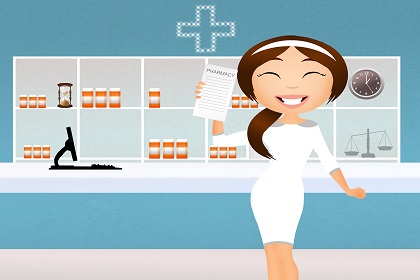
Instruction for Rectally Use Diazepam
LEARN MOREItems from the “Diazepam Rectal Use Kit”:
1. Diazepam injection: 10mg/2ml *1 amp
2. Rectal tube x 1
3. Syringe 5ml x1
4. Lubricating Jelly
Step1: Put person on their side where they can’t fall.Step 2: Get the “Diazepam Rectal Use Kit”.
Step 3: Gently tap the liquid down if the liquid is at the top of the ampoule. Break the glass ampoule on the blue dot. Use a piece of tissue paper or cloth to protect your thumb.
Step 4: Draw ml solution (dosage of diazepam 5mg/ml from your doctor) using the syringe and needle from the kit. Remove the needle from syringe, cap and discard the needle.
Step 5: Get the rectal tube. Attach the black part of the tube to the medication-filled syringe. Lubricate the white part of the tube with the lubricating jelly.
Step 6: Turn person on side facing you.
Step 7: Bend upper leg forward to expose rectum.
Step 8: Separate buttocks to expose rectum.
Step 9: Gently insert white part of the rectal tube at least half length into the rectum with the syringe attached.
Step 10 to Step 13:
10. Slowly count to 3 while gently pushing plunger in until it stops.
11. Slowly count to 3 before removing syringe from rectum.12. Slowly count to 3 while holding buttocks together to prevent leakage.
13. Keep person on side facing you, note time given and continue to observe.
Note:Discard all used materials in the garbage can. Do not reuse it. Discard in a safe place away from children.

Probiotics
LEARN MOREProbiotics are live organisms that provide therapeutic or preventative benefits for the host.
There are more than 20 kinds of probiotics used in China, mainly including bifidobacterium, lactobacillus, clostridium butyricum, saccharomyces boulardii, enterococcus, bacillus licheniformis, and bacillus cereus. Unlike other drug labels, the amount of probiotics is represented by the number of colony-forming units (CFU) in each package, which corresponds to the number of live bacteria. The clinical use of probiotics in JIAHUI hospital is summarized in the attached table.
Recommended common applications of probiotics
1. Acute diarrhea The main treatment principles of acute diarrhea are the prevention and treatment of dehydration continued feeding and rational use of drugs, etc. Probiotics can shorten the course of diarrhea and reduce the length of hospital stay. It is recommended to use bratella yeast powder, bifidobacteria triple viable powder, bifidobacteria quadruplex viable tablet, bacillus subtilis double viable tablet, clostridium caseinate viable powder, clostridium caseate double viable tablet, bacillus licans viable pellets, compound lactic acid bacteria capsule, lactobacillus bifidi triple viable tablet/enteric capsule.2. Antibiotic-Associated Diarrhea (AAD) The occurrence of AAD is related to the type and course of antibiotics used, the patient's age, length of hospital stay, complications, and other factors. Taking probiotics together with antibiotics can significantly reduce the incidence of AAD and reduce the degree of AAD. It is recommended to use yeast blabella, clostridium tyrosate, bifidobacterium bifidum, lactobacillus bifidum, clostridium tyrosate, bacillus subtilis, and bacillus licheniformis.
3. Treatment of irritable bowel syndrome (IBS) It is recommended to use bifidobacterium treble viable capsules, bacillus subtilis two viable enteric capsules, bifidobacterium four viable tablets and clostridium tyrosinate viable capsules.
4. Treatment of lactose intolerance Probiotics assisted in the treatment of lactose intolerance in infants can significantly shorten the course of treatment and hospital stay. It is recommended to use lactobacillus bifidum triple viable tablet, bacillus subtilis double viable pellets, bifidobacteria triple viable powder, and clostridium caseate double viable powder.5. Functional constipation Probiotics can improve fecal intestinal transportation time, enhance intestinal movement frequency, significantly improve defecation frequency and fecal viscosity, relieve defecation pain and difficult symptoms, and reduce the recurrence rate of functional constipation. It is recommended to use bifidobacteria triple viable powder/enteric capsule, lactobacillus bifidobacteria triple viable tablet, bacillus subtilis double viable pellets, clostridium tyrosinate double viable powder, bacillus brabella and bacillus licheniformis.
Be paid attention to in the use of probiotics
Probiotics should be taken with cold, warm water or milk. Probiotics are living microorganisms and advise spacing probiotics at least 2 hours apart from antibiotics. And a probiotic that contains yeast. Saccharomyces, Clostridium Butyricum, and bacillus are not sensitive to antibiotics and can be used together with antibiotics.Reference
1. 中华预防医学会微生态学分会儿科学组,益生菌儿科临床应用循证指南,中国实用儿科杂志 2017 年 2 月第32 卷第 2 期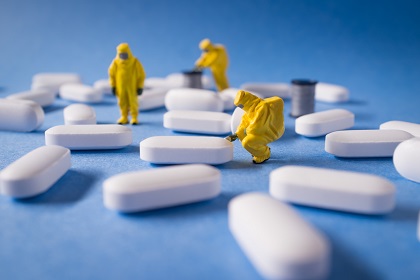
Oxycodone Hydrochloride Prolonged-release Tablets
LEARN MOREWhat is this drug used for?
It is used to ease pain.
How is this drug best taken?
1. Take by mouth only.
2. Take with or without food. Absorption enhanced by food
3. Swallow whole. Do not chew, break, crush, or dissolve before swallowing. Doing these things can cause very bad side effects and death.
4. Do not use for fast pain relief or on an as needed basis.
5. Do not take more than what your doctor told you to take.
Warning and caution
1. Fast, slow, or abnormal heartbeat.
2. Do not take with alcohol or products that have alcohol.
3. Trouble breathing, slow breathing, or shallow breathing.
4. Very bad dizziness or passing out.
5. Mood changes
6. Memory problems or loss.
7. Chest pain or pressure.
8. If the reaction ability is affected, do not engage in driving or operating the machine.What do I do if I miss a dose?
1. If you take this drug on a regular basis, take a missed dose as soon as you think about it.
2. If it is close to the time for your next dose, skip the missed dose and go back to your normal time.
3. Do not take 2 doses at the same time or extra doses.
4. Do not take more often than told by the doctorStorage conditions
1. Store at room temperature.
2. Protect from light.
3. Store in a dry place. Do not store in a bathroom.
4. Throw away unused or expired drugs. Do not flush down a toilet or pour down a drain unless you are told to do so. Check with your pharmacist if you have questions about the best way to throw out drugs. There may be drug take-back programs in your area for safe and proper disposal.Reference:
1. 氨酚羟考酮片中文说明书
2. 2018_2019 Top 300 Pharmacy Drug
3. Up to date临床顾问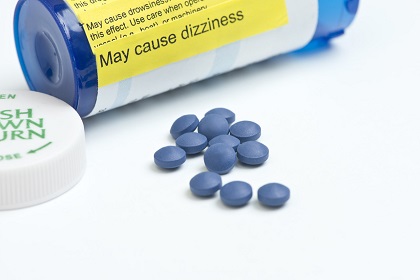
Morphine Sulfate Sustained-release Tablets(30mg)
LEARN MORE*What is this drug used for?
• It is used to ease pain.
• It is only to be used when around-the-clock (continuous) care is needed for a long time. It is also only to be used when other pain drugs do not treat your pain well enough or you cannot take them. It is mainly used for pain relief in patients with severe cancer pain.
*How is this drug best taken?
1. Swallow whole. Do not chew, break, crush, or dissolve before swallowing.
2. Adults should take it every 12 hours.
*Warning and caution!
1. What do I need to tell my doctor BEFORE I take this drug?
• If you are allergic to morphine or any other drugs, foods, or other substances. Tell your doctor about the allergy and what signs you had
• If you have any of these health problems: Lung or breathing problems like asthma, trouble breathing, or sleep apnea; high levels of carbon dioxide in the blood; or stomach or bowel block or narrowing. History of epilepsy.
• If you are taking or have taken any medication in the past 14 days, such as antidepressants, anticoagulants, etc.
• If you are breast-feeding. Do not breast-feed while you take this drug.
2. What are some things I need to know or do while I take this drug?
• Do not take with alcohol or products that have alcohol.
• Undiagnosed pain, as far as possible do not use this product, so as not to cover up the disease, miss the diagnosis.
• To lower the chance of feeling dizzy or passing out, rise slowly if you have been sitting or lying down. Be careful going up and down stairs.
• If you have been taking this drug for a long time or at high doses, it may not work as well and you may need higher doses to get the same effect. Call your doctor if this drug stops working well. Do not take more than ordered.
• If you are 65 or older, use this drug with care. You could have more side effects.
* What are some side effects that I need to call my doctor about right away?
1. Long-term or regular use of opioid drugs like this drug may lead to dependence. Lowering the dose or stopping this drug all of a sudden may cause a greater risk of withdrawal or other severe problems. Talk to your doctor before you lower the dose or stop this drug. You will need to follow your doctor’s instructions. Tell your doctor if you have more pain, mood changes, thoughts of suicide, or any other bad effects.
2. This drug may cause harm to the unborn baby if you take it while you are pregnant. If you are pregnant or you get pregnant while taking this drug, call your doctor right away.
3. Signs of an allergic reaction. For example: redness, swelling, heat, pain, etc.
4. Very bad dizziness or passing out.
5. Trouble breathing, Shortness of breath, slow breathing, or shallow breathing.
6. Feeling very sleepy.
7. Gastrointestinal discomfort such as severe abdominal pain, vomiting, and constipation can be very serious.
8. Chest pain or pressure or a fast heartbeat.
* What do I do if I miss a dose?
1. Skip the missed dose and go back to your normal time.
2. Do not take 2 doses at the same time or extra doses.
*Storage conditions
1. Store at room temperature.
2. Protect from light.
3. Store in a dry place. Do not store in a bathroom.
4. Keep all drugs in a safe place. Keep all drugs out of the reach of children and pets.
Reference:
1. Morphine Sulfate Sustained-release Tablets Package Insert
2. Applied Pharmaceutical Practice(2009)
3. Up to date
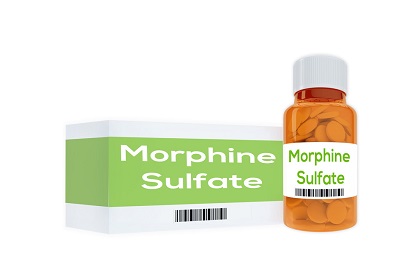
Morphine Sulfate Sustained-release Tablets(10mg)
LEARN MORE*What is this drug used for?
It is used to ease pain
*How is this drug best taken?
1. Take with or without food. Take with food if it causes an upset stomach.
2. Take this drug at the same time of day.
3. To gain the most benefit, do not miss doses.
4. If you have trouble swallowing, talk with your doctor.
*Warning and caution
1. Swallow whole. Do not chew, break, crush, or dissolve before swallowing. Doing these things can cause very bad side effects and death.
2. This drug is a strong pain drug that can put you at risk for addiction, abuse, and misuse. Misuse or abuse of this drug can lead to overdose and death.
3. This drug may cause very bad and sometimes deadly breathing problems. Call your doctor right away if you have slow, shallow, or trouble breathing.
4. Do not take with alcohol or products that have alcohol
5. Using this drug for a long time during pregnancy may lead to withdrawal in the newborn baby. This can be life-threatening. Talk with the doctor.
6. Long-term use of this medicine may cause constipation, if necessary, take some laxative.
*What do I do if I miss a dose?
1. Skip the missed dose and go back to your normal time.
2. Do not take 2 doses at the same time or extra doses.
*What are some side effects that I need to call my doctor about right away?
1. Signs of an allergic reaction, like rash; hives; itching; red, swollen, blistered.
2. Very bad dizziness or passing out.
3. Chest pain or pressure or a fast heartbeat
4. Trouble breathing, slow breathing, or shallow breathing.
5. Very bad constipation.
6. Swelling in the arms or legs.
7. A burning, numbness, or tingling feeling that is not normal.
8. Fever or chills.
*Storage conditions
1. Store at room temperature.
2. Protect from light.
3. Store in a dry place. Do not store in a bathroom.
4. Keep all drugs in a safe place. Keep all drugs out of the reach of children and pets.
Reference:
1. Morphine Sulfate Sustained-Release Tablets Package Insert
2. Up to date
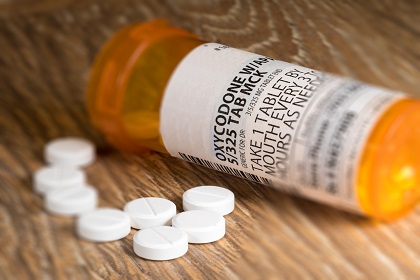
Oxycodone and Acetaminophen Tablets
LEARN MORE*What is this drug used for?
It is used to ease pain.
*How is this drug best taken?
1. Take by mouth only.
2. Take with or without food. Take with food if it causes an upset stomach.
*Warning and caution!
1. If you are taking more than 1 drug that had acetaminophen in it. You should talk with your doctor.
2. This drug may affect certain lab tests. Tell all of your health care providers and lab workers that you take this drug.
3. Call your doctor if this drug stops working well.
4. Do not take with alcohol or products that have alcohol.
5. Do not take more than ordered.
*What are some side effects that I need to call my doctor about right away?
1. Signs of an allergic reaction, like rash; itching; redness, swollen etc.
2. Very bad dizziness or passing out.
3. Trouble breathing, slow breathing, or shallow breathing.
4. Feeling very sleepy.
5. Very bad constipation.
6. Change in eyesight.
7. Feeling very tired or weak.
*What do I do if I miss a dose?
1. If you take this drug on a regular basis, take a missed dose as soon as you think about it.
2. If it is close to the time for your next dose, skip the missed dose and go back to your normal time. Do not take 2 doses at the same time or extra doses. Many times this drug is taken on an as needed basis. Do not take more often than told by the doctor.
*Storage conditions
1. Store at room temperature.
2. Protect from light.
3. Store in a dry place. Do not store in a bathroom.
4. Keep all drugs in a safe place. Keep all drugs out of the reach of children and pets.
Reference:
1. Oxycodone and Acetaminophen Tablets Package Insert
2. Applied Pharmaceutical Practice(2009)
3. Up to date
- First page
- Previous page
- ...
- 2
- 3
- 4
- 5
- 6
- ...
- Next page
- Last page








